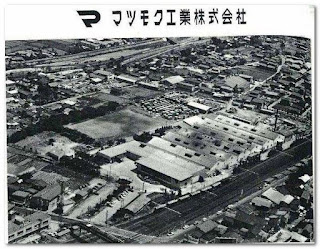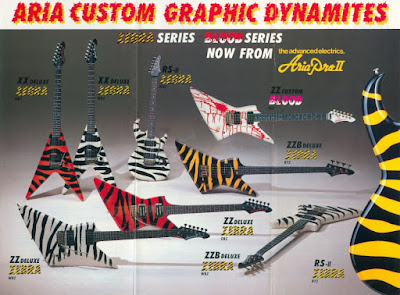MATSUMOKU IINDUSTRIAL COMPANY, A BRIEF HISTORY
Matsumoku Factory
There are many different stories out there on Matsumoku and the guitars they made. Some correct some not so correct. I am by no means the final word on Uncle Mats, as we collectors like to call it, but through the years I have learned quite a bit. That's why after 38 or so years playing Japanese made guitars, as well as American, Korean and others, I have decided to share some of that info I have learned with you. Many collectors of Uncle Mats don't like to share knowledge because they try to keep it their own secret to keep the prices low so they can buy more, lol. I however, am the opposite and to be honest most already know about these wonderful guitars.
Craftsman At Work
PE Series guitars
Matsumoku started out in the early 1950s as primarily a furniture maker. Their main product was cabinets that most Japanese people had in their homes to store items as closets were not all that common in Japan houses. They were highly decorated pieces with many compartments and were made by top craftsman.
Matsu Cabinets
In the 1940s after the war, Singer Sewing Machine Co started building machines and wood cabinets that held them in Japan. In the early 1950s not long after Matsumoku was formed, Uncle Mats was contracted by Singer sewing machine to make the cabinets that would hold the machines. They also were making speaker cabinets, amplifier cabinets and more. Not long after this Matsumoku became partly owned by Singer. By the early 1960s Singer moved much of its production to other Asian countries. This in turn left Uncle Mats with much less work. By this time they had many qualified craftsmen and decided to begin building instruments. Acoustic guitars and Violins were some of the earliest offering. Early on the quality was not always at the top but it didn't take very long to get things moving in the right direction.
1960s Offerings
By the mid 1960s they were hitting on all cylinders but still were not a household name because they would build the instruments for other companies. The next big wave was the electric guitar market. Around 1964 or so, Uncle Mats began building electrics to go along with the acoustics and archtops. They built many traditional type models like the Pauls and Fender, but were also known for their more oddball shapes. Curves and waves were all the rage. They more switches and knobs the better it seemed.
Beautiful examples, Aria and an Electra.
Through the 1970s Uncle Mats continued to pump out an amazing amount of QUALITY instruments. Some of the companies they built for included Aria, VOX, Epiphone, Electra, Greco, Ibanez, Yamaha, Norlin, Westbury, Memphis, Washburn, Hondo and countless more. By the late 1970s and into the 1980s they began using CNCs BUT 60% of the work was still done by hand especially the necks. Maily it was the bodies that were CNC. Sadly by 1987, Singer, the parent owner of Matsumoku went bankrupt and couldnt afford to buy itself out so the doors were closed, as was the chapter, on this once incredible company.
Westbury and Quest brands
Today people are finially realizing the quality and craftsmanship of these beautiful guitars and in my eyes its about time. I have owned over 150 of Japanese made guitars from this era and still have about 75. Some rare some not, but all are my favorite. I hope this gives you a little insight on the incredible company. Keep in mind there were others like Uncle Mats building in this golden age of Japanese guitars, and I will touch on them as well. Thanks for reading, Anthony Palumbo.












Comments
Post a Comment